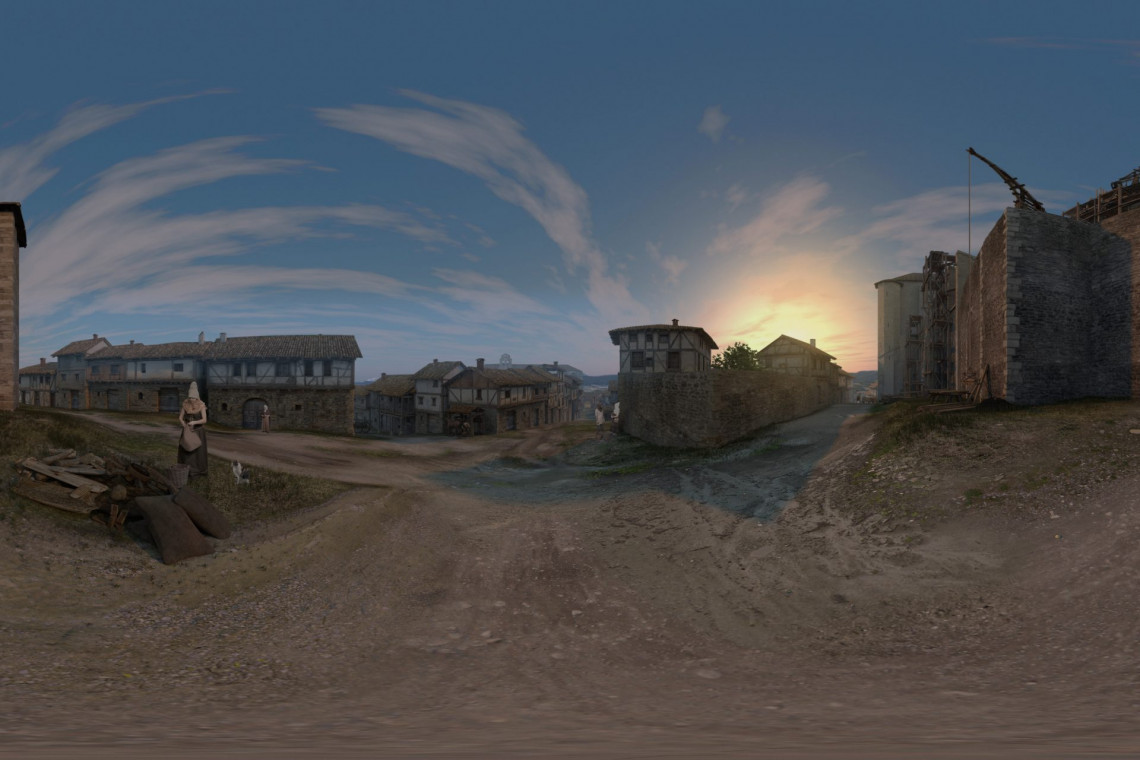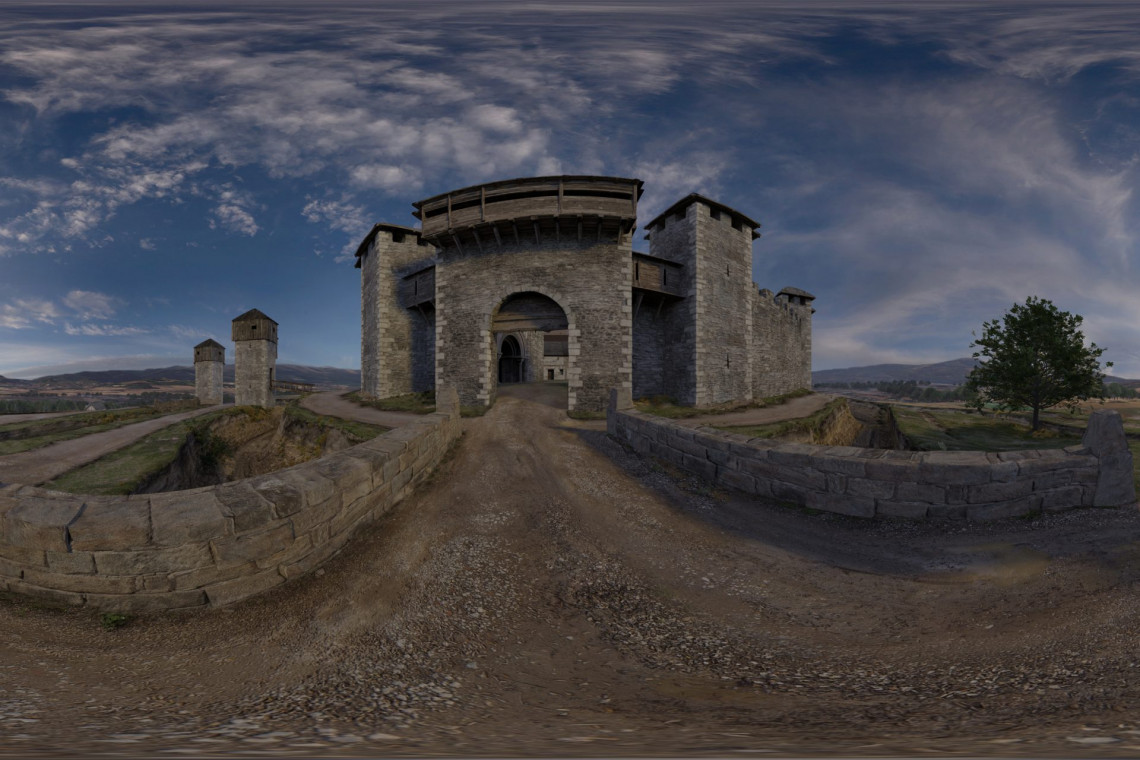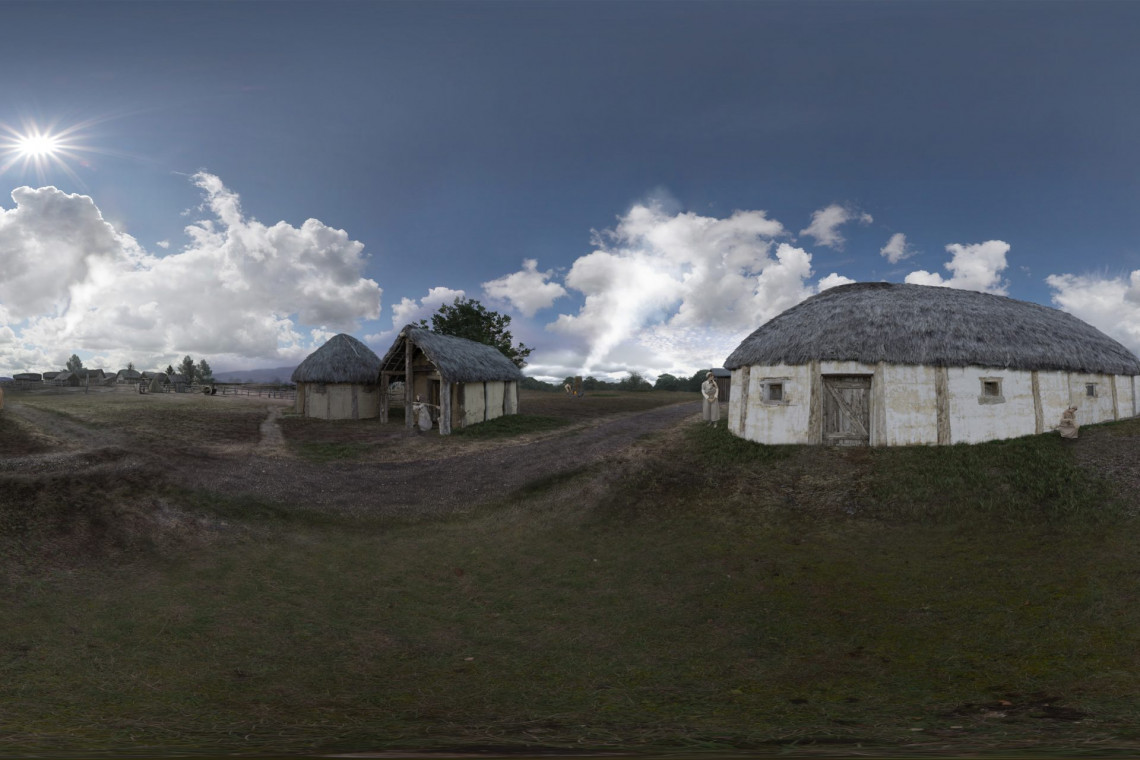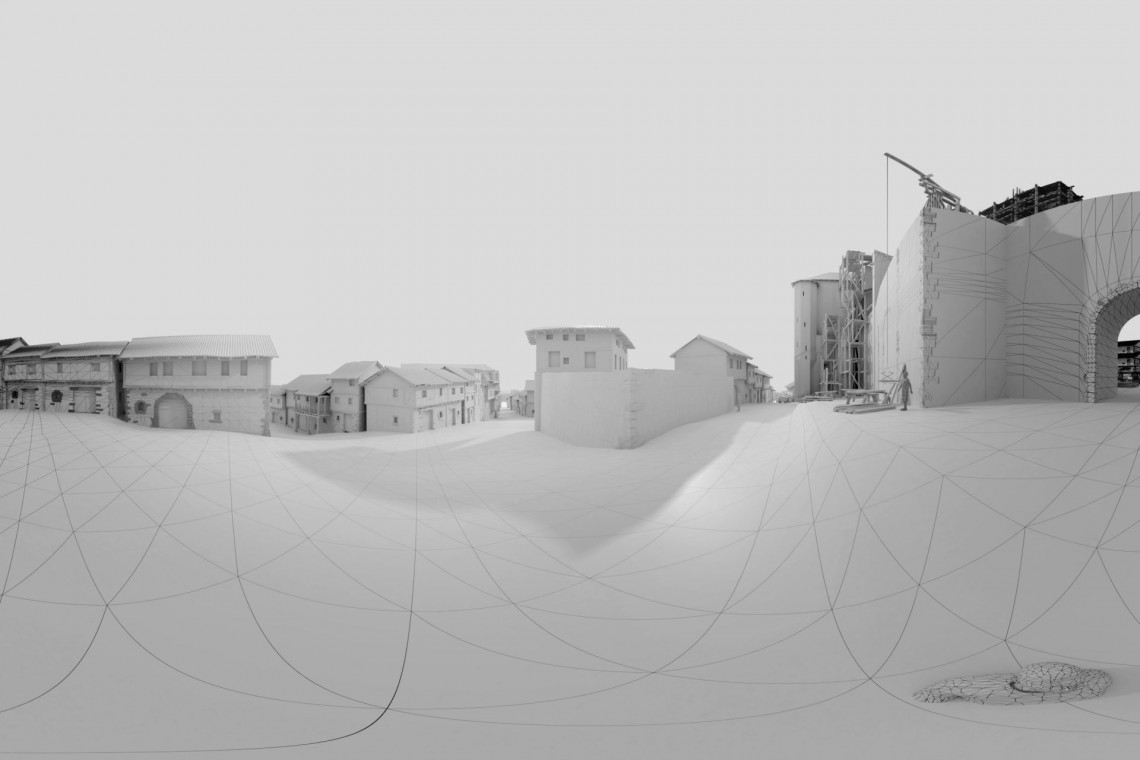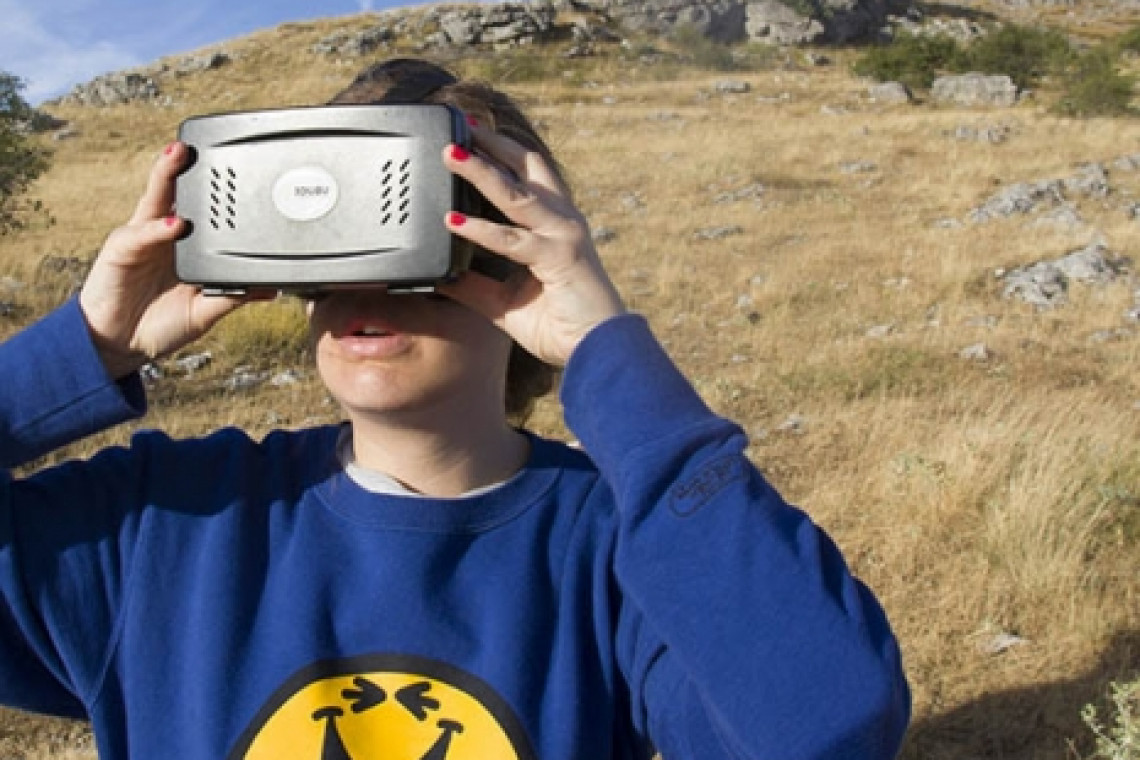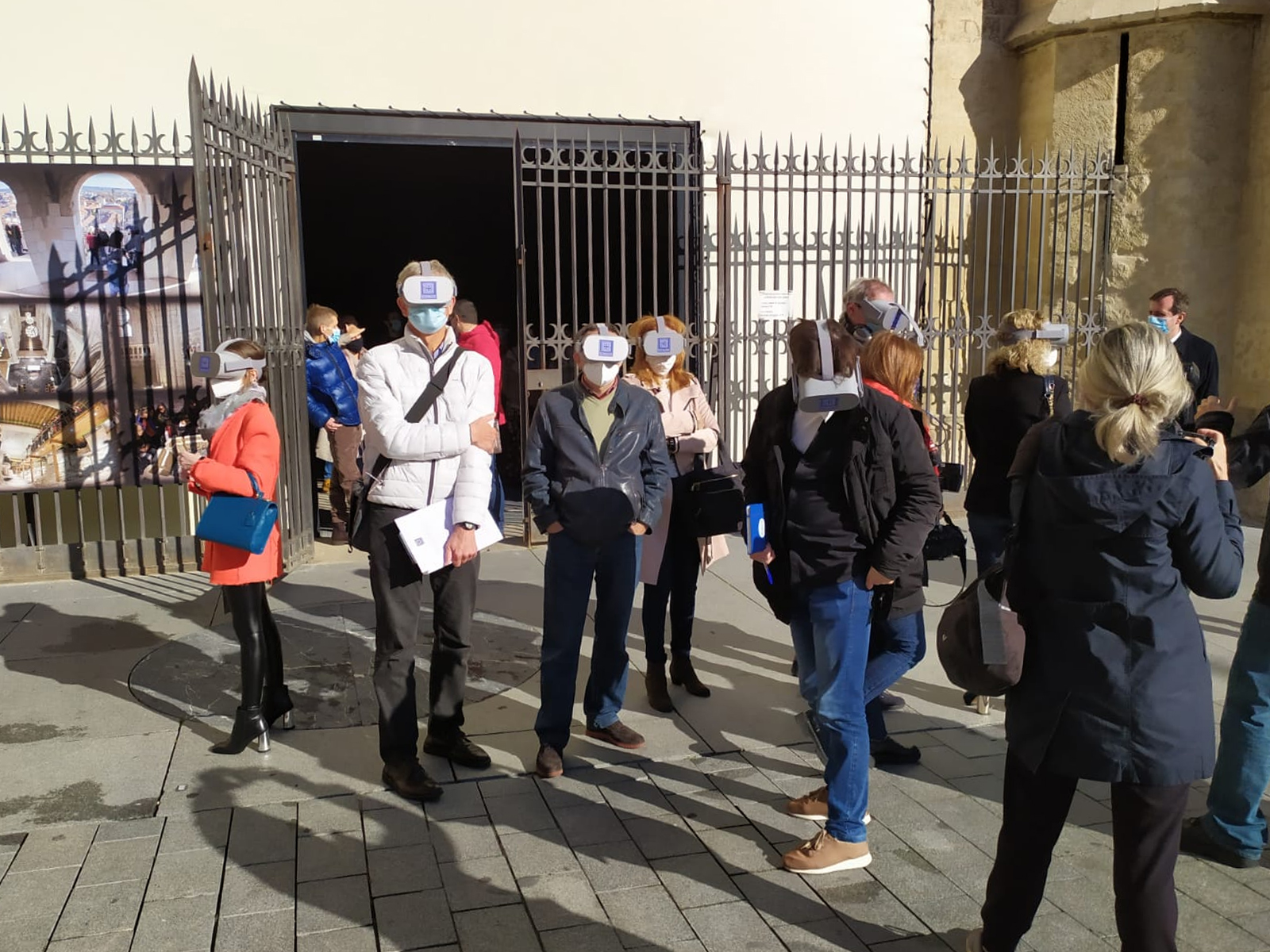Virtual reconstruction of the cathedral of Vitoria-Gasteiz 360
between the 9th and 17th centuries .
The origins of Vitoria-Gasteiz 360
A project of virtual reconstruction 360º combined with video postproduction for the virtual tour "The origins of Vitoria-Gasteiz 360º".
The history of Vitoria-Gasteiz
The keys of the project
Use of documentation
After more than 20 years of research by the GPAC research group of the UPV-EHU, the need to capture all the data collected in the excavations arises. A virtual reconstruction in 360º provides both researchers and visitors with the ability to see, through technology, what Vitoria-Gasteiz was like between the 9th and 17th centuries and also to ask themselves new questions.
Dissemination of results
The information published in recent times becomes tangible and accessible to a general public through the promotion of dissemination promoted by the Foundation of the Cathedral of Santa Maria de Vitoria and the Provincial Council of Vitoria.
Multidisciplinary team
For a project of this magnitude, specialists were required in several areas: 3D modeling and texturing, enviroments, particles, lighting, post-production and compositing. It has also required research in 360º video, virtual reality and application design to design a totally personalized on-site visit. The Area of Audiovisual Communication of the University of Burgos is a key piece to achieve harmony between the dissemination of heritage and new technologies.
Journey to the past
The technology required for the reconstruction and viewing of heritage 360º provides an immersion and a point of view that would not have been possible with any other technology. This content, also available for virtual reality glasses, forces the user to immerse themselves in the streets at different times and to observe the differences with the same areas today.
3D Modeling for Virtual Reality
When working for Virtual Reality or 360º video the modeling process changes a lot compared to modeling for classic content. Optimization is no longer recommended, but is mandatory since it involves long shots in which a large number of objects can be seen at different distances, some of them animated. This forces the team to plan the production time in detail to ensure an optimal quality of experience while maintaining performance. The objects are modeled by adapting the level of detail to their "weight" in the 360º view, that is, according to the distance to the user and their size among other factors.
360 Video
High resolution 360º video rendering allows the visualization of online content and also offers support for virtual reality glasses. It is a way of combining both technologies that allows to reach both a general public and the most curious ones. The production process for 360º video is longer and needs more attention to detail than classic video because it is based on long scenes from the same point where the user can explore with total freedom everything around him.
Below is the basic 360 model (without textures or postproduction) of the entrance to Vitoria-Gasteiz in the 16th century.
Custom application for Android smartphone and Oculus Go
One of the novelties for the team involved in this project has been the development of an application that did not exist until now. It is an application for Android that allows to control the reproduction of the content in the Oculus Go! portable virtual reality glasses (it also has support for Oculus Quest and Quest 2).
This application is considered innovative not only because it allows the user not to need a controller (remote), which is a function already explored by the leaders in the sector although in an experimental way, but also because it allows this to be done without an Internet connection, making it the only application that allows remote control outdoors and all kinds of isolated or simply offline sites.
Guided tour in virtual reality
The Foundation of the Cathedral of Vitoria extends its catalog of guided tours with virtual reality. The new visit consists of 3 real points in which when putting on the glasses the user travels in time to the different reconstructed periods. One of these points is at the top of the bell tower of the cathedral and one can see the evolution of Vistoria-Gasteiz from its origins to the present day.
Remote working
The last weeks of the project have had to be developed through teleworking due to the situation caused by the Covid-19. This has meant inconveniences for our work method such as not being able to go out to photograph textures or take references but from the 3DUBU team we have looked for simple and creative solutions to face this crisis in the best possible way. Beyond video conferences and cloud work, we have managed to create a working environment that improves, in a certain sense, both the performance and productivity as well as the personal life of the team through the application of totally flexible schedules, the evaluation of work by objectives and the delegation and confidence in the team. So much so that all these measures will be maintained, even if only partially, when this situation is over.

Making of
Work team
This project was financed by the Provincial Council of Alava and coordinated from the Santa Maria Cathedral Foundation. The historical and archaeological contents were coordinated by José Luis Solaun and Ismael García from the GPAC research group of the UPV-EHU. This was the team of the virtual reconstruction and edition process:

Mario Alaguero Rodríguez
Profesor del Área de Comunicación Audiovisual y Publicidad de la Universidad de Burgos.
Samuel Arias Tejedor
Técnico especialista en enviroment, renderizado y programación. Universidad de Burgos.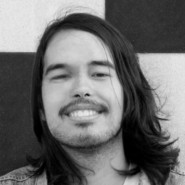
Bruno Rodríguez García
Técnico en modelado y animación 3D y en grabación y edición de video. Universidad de Burgos.
